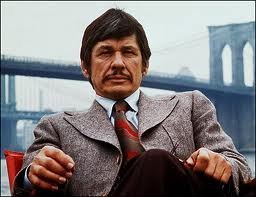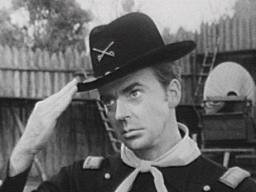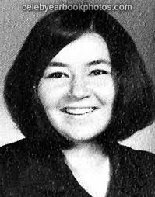Frankfort is the capital city of the U.S. state of Kentucky. It has been the state capital since December 8, 1792. It is the county seat of Franklin County, and has been since 1795. It's located between Lexington and Louisville Kentucky.
Frankfort is beside the Kentucky River. This is how the city earned its name, because the land was owned by pioneer Stephen Frank. First called "Frank's Ford", the name was soon shortened to Frankfort.
Within a century the population of Frankfort grew from 9,487 in 1900, to 27,741 in 2000. The members of the city commission and the mayor are elected by the citizens.
The mayor of Frankfort in 2008 is Gippy Graham.
Kentucky touches the states of Missouri (by the Mississippi River), Illinois, Indiana, Ohio, West Virginia (by the Ohio River), Tennessee and Virginia. There are many rivers in Kentucky.
The first people to settle in Kentucky were Native Americans before the arrival of Europeans. African slaves worked on plantations.
Louisville, the main city of Kentucky until last century, was founded in the XVIII century (around 1778) by George Rogers Clark and some French colonists.
Some people call it the "Bluegrass State" because of a special kind of grass that grows there. There are also horses in Kentucky that eat this blue grass. Kentucky is very famous for its horse farms. The Kentucky Derby, a well-known horse race. It is held in the city of Louisville, which is also the largest city in the state.
Other well-known places are Fort Knox, The Cumberland Gap, Cumberland Falls, Mammoth Cave, Red River gorge, and Land Between the Lakes.
Some well-known towns and cities are Louisville, Lexington, Owensboro, Bowling Green, Covington, Florence, Maysville, Georgetown, Paducah, Murray, Bardstown, Morehead, Midway, Berea, Richmond, Danville, Versailles, Elizabethtown, Radcliff, Corbin, Somerset, Ashland, and Middlesboro.
Hodgenville, Kentucky is famous for being the birthplace of U.S. President Abraham Lincoln.
Relax as our Old-Fashioned Potato Soup simmers stove-top, and look forward to the thick, rich-tasting result that is as wonderful as the original, but uses a today shortcut to make it even easier.
- 1 1/2 cups diced onion
- 1/4 cup (1/2 stick) butter or margarine
- 4 cups large-diced potatoes (about 2 to 2-1/2 pounds)
- 1 carrot, coarsely grated
- 2 cups water
- 1 teaspoon salt
- 1/2 teaspoon pepper
- 1 teaspoon dried dill weed
- 3 cups milk
- 2 tablespoons chopped fresh parsley
- 1/4 cup potato flakes
- In a large saucepan, brown the onion in the butter. Add the potatoes, carrot, water, salt, pepper and dillweed.
- Cook on low until potatoes are creamy, about 45 minutes. Stir in the milk and parsley and continue cooking until mixture is heated through. Stir in the potato flakes.
And births this date include...
National Housewife’s Day sets aside November 3rd to recognize the millions of hardworking housewives. The day honors the stay-at-home moms who take care of the children and the home. It’s a 24/7 job that sometimes does not get the thank you that is much deserved.
The term housewife is an old term stemming from the days when most families were supported by one income. The father worked, and the mother stayed home to take care of the house and the children. These days, usually both parents work outside the home. According to the Bureau of Labor and Statistics, in 61 % of households with children, both parents work outside the home.
Of course, the age of the children impacts how much a parent stays home, too. And it isn’t always the mother who stays home. Sometimes it’s a dad. So, househusbands are on the rise. However, current statistics are difficult to find.
Today is also............
Whether you stack it high or thin, National Sandwich Day on November 3rd recognizes one of America’s favorite lunch items.
The sandwich is believed to be the namesake of John Montagu, 4th Earl of Sandwich, following the claim that he was the inventor of the sandwich. No matter who invented it, we celebrate every kind of sandwich.
While the modern sandwich is believed to be named after John Montagu, the exact circumstances of its invention and original use are the subject of debate. There is a rumor in a contemporary travel book titled Tour to London, by Pierre Jean Grosley, that formed the popular myth that bread and meat sustained Lord Sandwich at the gambling table. It is said that Lord Sandwich was a very conversant gambler and did not take the time to have a meal during his long hours playing at the card table. When hungry, he would ask his servants to bring him slices of meat between two slices of bread. This practice was a habit that was well known to his gambling friends who soon began to order “the same as Sandwich,” and from this, the sandwich was born.
N.A.M. Rodger, who wrote Sandwich’s biography, suggests that because of Sandwich’s commitment to the navy, politics, and the arts, the first sandwich was more likely to have been consumed at his work desk.
Before being known as sandwiches, the food seems just to have been called bread and meat or bread and cheese.
Types of Sandwiches
In the United States alone, we have some pretty delicious sandwich inventions. The cheesesteak and sloppy joe are American classics. Don’t forget the muffuletta or the Monte Cristo. We love our Po boys and grilled cheese, pork tenderloins, and po’boys, too. However, we can’t forget some of these other absolutely delicious options:
- BLT
- Club
- Dagwood
- French Dip
- Peanut Butter and Jelly
- Pilgrim
HOW TO OBSERVE
Go out for a sandwich with a friend.
NATIONAL SANDWICH DAY HISTORY
National Day Calendar® continues researching the origins of this tasty food holiday. However, John Montagu, 4th Earl of Sandwich, was born on November 3, 1718.





















No comments:
Post a Comment